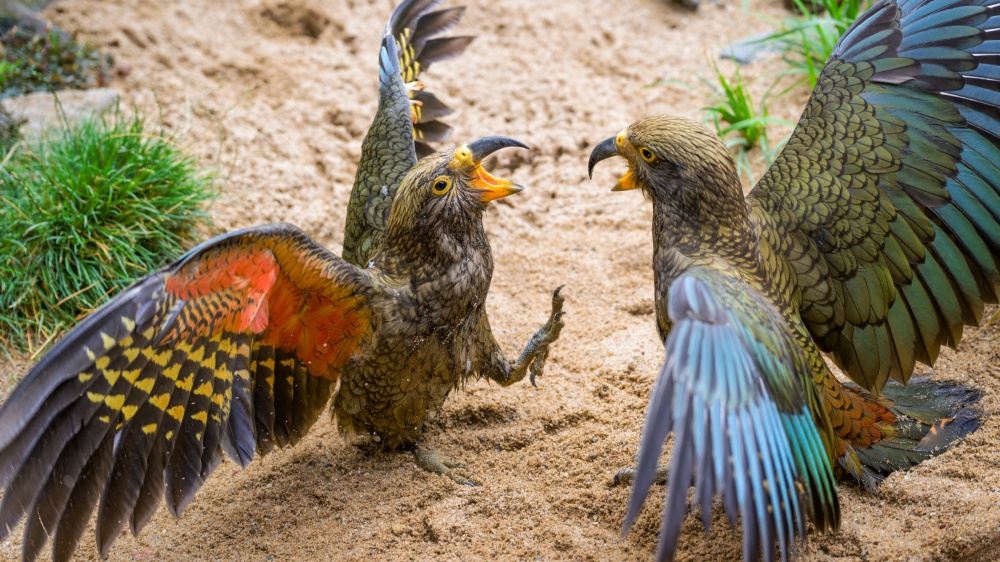Adopted by their own parents: kea chicks on display at Prague Zoo
03. 08. 2023
The kea chicks have taken up residence in the exhibition with their parents. The little parrots were artificially fed in the rear facilities, so it is only now that they have met the parent pair – a male, Rudy, and a female, Judy. This makes the first aviary in the Rákos’ Pavilion near the main entrance a very lively place indeed. This is further abetted by the weather now, which encourages greater activity in these parrots, the only ones in the world to live at alpine altitudes.

Kea chicks taking up residence in Rákos’ Pavilion. The seemingly drably coloured parrot does honour to its order with colourful marking on its underwing and rump. Photo Petr Hamerník, Prague Zoo
“In essence, it is an adoption by the birds' own parents,” said Antonín Vaidl, the bird curator. This alternative rearing method has already proved its worth with Javan green magpies and several species of laughingthrushes. However, this is a first for Prague Zoo as concerns parrots. "The inexperienced female Judy was nesting for the first time, so we thought it would be better to place her eggs in the hatchery. The chicks hatched at the end of February/start of March and we then hand-fed them in the incubator,” said Vaidl describing the breeding process, adding that these are the fourth and fifth chicks of this endangered species in Prague Zoo’s history.
However, it was necessary to socialise the little nestlings with other birds of their species as soon as possible. With regards to their intelligence, which is exceptional even for parrots, which are generally very resourceful, it was important to keep the time they were isolated from other individuals to the bare minimum.

In a trice the chicks joined in with the adult games. Keas are incredibly resourceful and Prague Zoo regularly provides them with various puzzles to play with. Here a pair of keas are solving one such puzzle together: on the left is an adult, on the right is one of this year’s chicks. Photo Petr Hamerník, Prague Zoo
“At the start of the summer we placed the chicks in the nesting burrow behind the contact grille. That way they could get to know their parents whilst we could continue to care for them and watch their interactions,” explained Vaidl. The method proved its worth over the following weeks. The chicks’ attention-seeking chirrups aroused parental behaviour in the adult pair. “When we removed the grille, the female had formed a greater bond with the chicks, although the male was more apprehensive and initially tried to drive them away. However, after just a few days we observed him feeding and caring for both chicks in an exemplary manner.”
Currently, the zoo’s visitors can find the group of four birds in the aviary. In addition to their inquisitiveness, which means keas love solving the puzzles and conundrums offered to them as part of the various enrichment elements, and their adaptation to a colder climate, these New Zealand parrots are also peculiar in that they are omnivorous. In the wild, they hunt small vertebrates, and so the diet of root vegetables given to them at Prague Zoo is diversified by boiled eggs as a source of animal protein.








